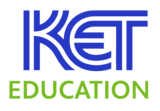
Create sculpture using every day materials like Metalsmith Glenn Horr.
- Subject:
- Arts and Humanities
- Visual Arts
- Material Type:
- Activity/Lab
- Provider:
- PBS LearningMedia
- Author:
- PBS Learning Media
- Date Added:
- 06/14/2024

Create sculpture using every day materials like Metalsmith Glenn Horr.

Music educator Michelle Lewis teaches her students how to create vodcast music lessons. Lewis hopes that their vodcast YouTube channel will help students in schools without a music program learn music concepts.

Georgina Drapeau and Mat Pendleton of the Lower Sioux Indian Community talk about the revival of quill working traditions taking place in the Minnesota River Valley, inspired by master quill workers Hope TwoHearts of Cansayapi and David Louis of Flandreau, South Dakota.
A lesson plan for grades 7-12 is included as a gallery asset and in the support materials.
More About This Resource
Daughter of a master quill artist, Georgina Drapeau and Mat Pendleton of the Lower Sioux Indian Community near Morton are interviewed for a story about a revival of quill working traditions taking place in the Minnesota River Valley, inspired by master quill workers Hope TwoHearts of Cansayapi and David Louis of Flandreau, South Dakota.
Pieper Bloomquist uses natural materials and homemade paints in the Swedish styles of Dalmålning and Bonadsmålning. She studied under master artists Karen Jenson of Milan, MN and Judith Kjenstad of Minneapolis, MN and works from her studio in Grand Forks, ND.
Postcards is an award-winning series showcasing the arts, history, and cultural heritage of western Minnesota and beyond. Funding for Postcards comes from the Minnesota Arts and Cultural Heritage Fund. To watch more Postcards visit our show page or video portal.
Pioneer PBS is a viewer-supported television station dedicated to sharing local stories of the region with the world. Support our mission and become a member at here.

Watch the clip, Bomba or Baseball, from Alma's Way to spark conversations about dancing and not getting things right on the first try. Then, introduce the activity to help students practice developing their coordination skills and work to strengthen their large muscles.
NOTE: The PDF document assets and Support Materials are also available in Spanish.

Sixteen dancers from across the country, representing a range of dance styles, move as one being, with each dancer's moves flowing naturally into the next. Poet Chinaka Hodge narrates each dancer’s steps from all around the United States as we shelter-in-place. Inspired by Mitchell Rose's Exquisite Corps chain letter, each dancer begins in the last pose of the dancer before passing the movement.
If Cities Could Dance is a Webby Award-winning video series featuring dancers from cities across the United States. Step into the shoes of dancers from across the country who dare to imagine what it would look like if their city could dance.
Extension Project: Give your middle and high school students the opportunity to create and publish original dance videos with an accompanying artist statement with the KQED Youth Media Challenge: If Schools Could Dance.

Explore the role media plays in our understanding of race and racism. Hear from experts who share advice on how educators can use media to confront injustice, and create anti-racist classroom environments.

Recently, a doctored video of Speaker Nancy Pelosi got millions of views on social media. Deepfakes are becoming easier to make and spread, and Above the Noise is here to help people understand this new phenomenon and what to do about it.

In this episode of Art School, visit Paccarik Orue in the studios of Rayko Photo Center where he is currently an Artist-In-Residence. Tag along with Orue as he makes photographs in the Iron Triangle neighborhood of Richmond, California. From 2009-2011, Orue photographed residents and structures there for his book titled, There Is Nothing Beautiful Around Here.
Orue also introduces us to his latest body of work, which is centered in the city of Cerro de Pasco in his home country of Peru. Cerro de Pasco is one of the highest cities in the world, perched atop the Andean Mountains. Even though he has returned to his homeland, Orue feels like an outsider.
In the second video, learn how to scan, clean and color-correct medium format film, as Orue demonstrates the necessary steps for digitizing color film negatives.

Learn about inspirations for a story and how that story can inspire a new song. Mary and Mike travel to the Music Resource Center in Charlottesville to meet up with the author, Marc Boston, and the musician, Tevin White. Marc shares his beautiful children’s book, inspired by his own daughter. And Tevin shares a special song that he wrote, inspired by Marc’s book. Together, we learn how to stop carrying so much stuff!
More About This Resource
Presented by VPM.
Songs and Stories with Mary and Mike uses music and story as the joyful pathway to learning for young children while integrating and modeling the state's new EC learning standards for literacy, math, and social-emotional learning as well as the National Standards for Music Education. The show forges connections across the greater community by featuring guest teachers, artists, musicians, authors, and community members. With every music selection, book selection, and guest spotlight, Mary and Mike strive for a rich, diverse, beautiful representation of all people and cultures. The message to beautiful learners is clear: they are loved, they are valued, and they can do amazing things.

This audio piece produced by KQED explores the life of Dorothy Arzner. Perhaps the most prolific female director in movie history, Arzner was the first woman to be accepted into the Directors Guild of America and is the inventor of the boom mic. She directed more than 20 unflinchingly feminist films from 1927 to 1943, before finishing her career teaching at UCLA’s film school, where she left a lasting impression on countless students, including Francis Ford Coppola. Anzner did, said, and filmed whatever she wanted and blazed a trail for the many who followed.

This PBS Learning Media activity addresses drought basics, including its causes and impacts and ways to assess it, by using media from NOAA and NASA. It defines the types of drought, the impacts, monitoring, and responses to drought. Use this resource to stimulate thinking and questions on the complexity of drought and to identify some variables used in defining drought.

In this set of activities, students learn about impacts of drought through news videos of communities facing serious water shortages, analyze drought data and models, and research and evaluate potential solutions. This lesson works well as a component within a larger unit on climate change, its impacts, and ways to address the resulting issues.

Through this set of lessons, students learn about the impacts of water shortages due to drought, make connections to climate patterns, and explore community resiliency solutions. The lessons engage students in evaluating solutions for a particular case study community. Students will need to do additional research on solutions, but by the end of the lesson, students will be able to articulate how drought, although a localized problem, has far-reaching impacts, and to suggest solutions to a problem that is projected to intensify as the climate continues to change.

Drums are more than just a collection of natural elements. The art and science of drum making have been part of Indigenous cultures throughout the world for millennia. Drums have a deep spiritual resonance, but also have a necessary understanding of physics, in order to achieve the correct sound.

In the prime of her career (1930 - 1960s,) African American dance legend Katherine Dunham and her company toured over 60 countries, and she performed on Broadway and in Hollywood films. She created the Katherine Dunham Technique, bringing together elements of dances from the African diaspora -- including Haiti, Jamaica, Martinique, and Trinidad -- with modern dance and ballet. The rigorous technique is credited for bringing Black dance to the classroom and to the stage, where it has mesmerized audiences globally and transformed the world of dance.
The program Dunham created runs to this day at the Katherine Dunham Centers for Arts and Humanities, and continues to revolutionize lives with dance and culture. Meet some of East St. Louis’ culture keepers, including Ruby Streate, one of Dunham’s most trusted teachers whom Dunham passed the baton to, and choreographer and educator Keith Tyrone Williams. Watch dancers Heather Beal and other Dunham program alums perform at the Mississippi River’s edge, in front of the Katherine Dunham Museum, and in downtown East St. Louis.

Learn about the fundamental connections between math and music, in four Acts: Rhythm, Frequency, Harmony and Fractals. Concepts presented in the video documentary are reinforced by hands-on experiments using the Google Chrome Music Lab Experiments.

Color is one of the seven basic building blocks of art along with Line, Form, Shape, Value, Space, and Texture. Learn how different colors have different impacts on how emotions are conveyed through art.

Form is one of the seven basic building blocks of art along with Line, Space, Shape, Value, Color, and Texture. Through the eye-fooling genre of Trompe L'oeil, we look at a variety of techniques artists use to transform shapes into forms and give their art depth and dimension.
Check out the entire collection of KQED Art School videos!

Line is one of the seven basic elements of art along with Shape, Form, Texture, Value, Space and Color. These are the building blocks of all art and are a good place to start when making, looking at or analyzing works of art. However, lines are not only limited to drawings. They apply to photographs, videos and anything that is placed anywhere deliberately to convey meaning. Learn about the different types of lines here.
Check out the entire collection of KQED Art School videos!

Shape is one of the seven basic building blocks of art along with Line, Form, Texture, Value, Space, and Color. Using still life paintings of fruit, we look into how artists' create their individual style and develop a unique approach to making shapes.
Check out the entire collection of KQED Art School videos!